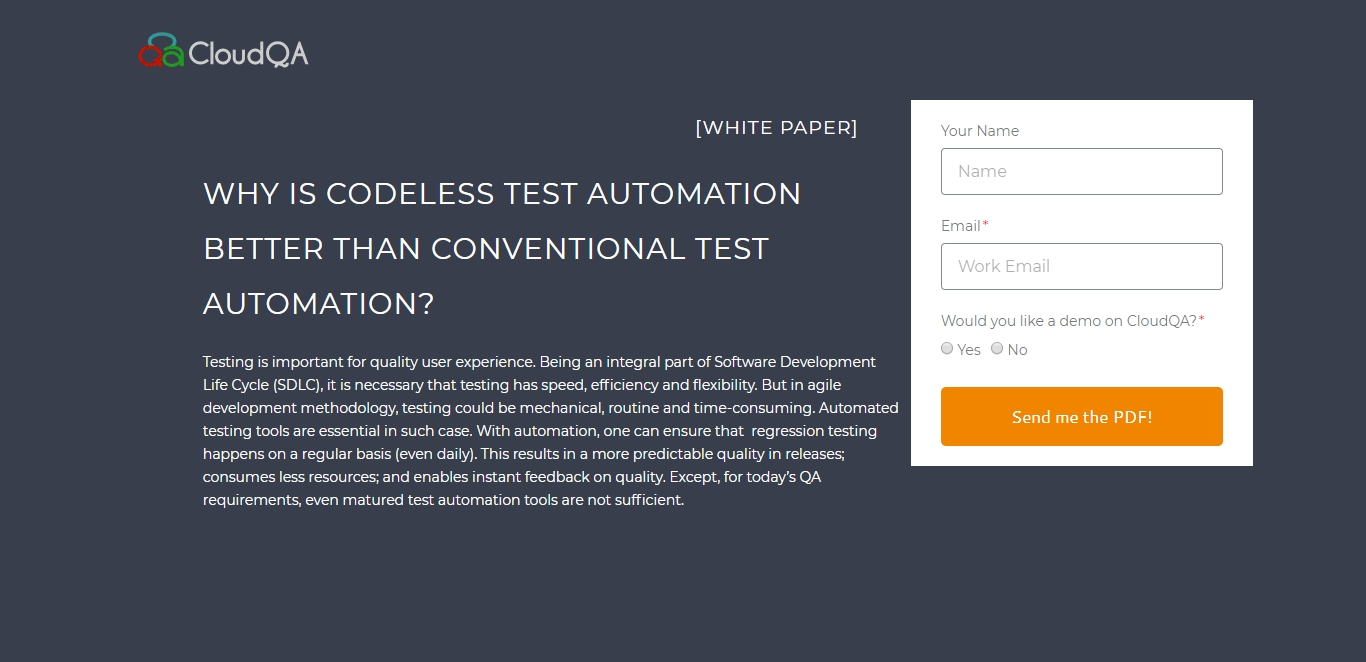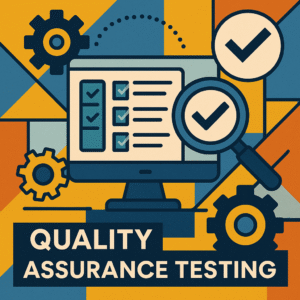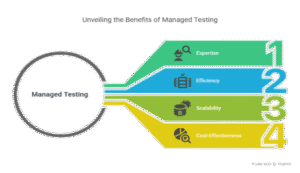Top Regression Testing Tools and Techniques in 2026: A Detailed Comparison Guide
Last Updated: December 16th 2025
Struggling with a slow and unreliable regression testing process? Discover how CloudQA’s codeless automation platform can help you build a fast, robust, and low-maintenance regression suite. Get your demo today.
Table of Contents
Introduction
Modern applications change fast. Releases are frequent, features evolve quickly, and user expectations are higher than ever. Regression testing ensures that new updates do not break existing functionality. To keep up with the pace of development, teams increasingly rely on specialized regression testing tools that support automation, scalability, and reliability.
If you want a full foundation on how regression testing works in the software development lifecycle, see our master guide: Regression Testing in Software Development.
This article provides a detailed comparison of the top regression testing tools in 2025, along with practical techniques that help teams maximize test coverage. CloudQA is featured prominently because it offers the strongest combination of speed, stability, and ease of use.
What is Regression Testing? A 101 Definition
Regression testing is a type of software testing that is performed to verify that a recent code change has not negatively impacted existing features. The term “regression” refers to the act of a software feature “regressing” or reverting to a less developed state. The primary goal is to ensure that what was once working correctly continues to work correctly after a change has been made.
Imagine you’re an electrician who is asked to install a new light fixture in a house. After you’ve installed it, you don’t just check if the new light works; you also quickly check the other lights and outlets in the same circuit to make sure your work didn’t accidentally trip a breaker or cause another issue. That follow-up check is the real-world equivalent of regression testing.
It is a core component of the software testing lifecycle and is typically performed after a developer fixes a bug or adds a new feature to the application.
Why Regression Testing is Critical, Especially in Agile
In a traditional, slow-moving “waterfall” development model, regression testing was often a lengthy phase that occurred just before a major annual release. However, in modern Agile and DevOps environments, where updates are pushed out weekly, daily, or even hourly, a robust regression testing strategy is not just important—it is absolutely essential for survival.
Here’s why it’s so critical:
- It Builds Confidence: A comprehensive regression suite gives your team the confidence to make changes and innovate quickly. When developers know that a safety net is in place to catch unintended side effects, they can refactor code and build new features without fear.
- It Protects the User Experience: Regressions are particularly damaging because they break functionality that your users have come to rely on. A bug in a brand-new feature might be an annoyance, but a bug that prevents a user from logging in or completing a purchase can destroy trust and drive customers away.
- It Saves Time and Money: Catching a regression bug early in the development cycle, often through an automated test run, is exponentially cheaper to fix than finding it after it has been released to production. It prevents costly hotfixes, rollbacks, and damage to your brand’s reputation.
- It Enables Continuous Delivery: You simply cannot practice continuous delivery (CD) without a fast and reliable automated regression suite. The ability to automatically validate the entire application after every single code change is the foundation of a modern DevOps pipeline.
Regression Testing Use Cases
- Regression testing ensures that the changes have not introduced new bugs in the existing features which were functioning well before.
- When the underlying technology is changed or upgraded due to old libraries being deprecated. To ensure that this does not have any impact on functionality, testers perform complete regression testing.
- When a developer does code optimization or performance fixes then also testers perform regression testing.
Quickly convert your end-to-end web testing process to run over 80% faster and accurate now.
How to Build an Effective Regression Testing Strategy
A successful regression strategy is not just about running tests; it’s a holistic process.
- Build Your Regression Suite: Start by identifying the core test cases that make up your regression suite. This should include:
- Tests for the most critical, high-traffic features.
- Tests for areas of the application that are particularly complex or have historically had many bugs.
- A selection of both positive (“happy path”) and negative test cases.
- Automate, Automate, Automate: Manual regression testing is not sustainable in an Agile environment. You must automate your regression suite. This is the single most important step you can take to improve your testing efficiency.
- Integrate with Your CI/CD Pipeline: Your automated regression suite should be integrated with your Continuous Integration (CI) server to run automatically after every code commit. This provides immediate feedback to developers.
- Regularly Maintain the Suite: A regression suite is a living entity. You must regularly review and update it. Add new tests for new features, and update existing tests when functionality changes. Remove tests for features that have been retired.
- Analyze the Results: Don’t just look at the pass/fail numbers. Analyze the results to identify flaky tests (tests that fail intermittently) and areas of the application that are consistently generating regressions.
Top Regression Testing Tools Compared
1. CloudQA
CloudQA is a codeless automation platform built for modern regression testing. It allows teams to create powerful automated tests without writing code, making it ideal for businesses that want broad coverage with minimal maintenance.
When to Use It
Use CloudQA when your team needs fast test creation, low maintenance, cross-browser coverage, and easy scaling across large regression suites.
How It Works
CloudQA uses a drag-and-drop interface for building tests. Smart element locators adapt to UI changes. Tests run in parallel across multiple browsers, and integrations with CI and CD pipelines support continuous testing.
Pros
- Codeless test creation for rapid setup
- Self healing elements reduce maintenance
- Strong for UI regression testing
- Parallel cloud execution across browsers
- Data driven testing support
- Detailed visual logs and reporting
- Suitable for non technical testers
- Excellent for SaaS platforms, Salesforce, and Dynamics 365
Cons
- Less suitable for deep backend logic that requires heavy scripting
- Very large enterprise suites may require onboarding time to organize modules
Best For
Teams that want high coverage, rapid automation, and minimal test maintenance.
2. Selenium
Selenium is the most widely adopted open source automation framework. It gives full control over browser-based automation but requires engineering expertise.
When to Use It
Use Selenium when your team includes automation engineers who prefer full scripting control.
How It Works
Selenium WebDriver interacts programmatically with browsers using languages like Java, Python, or JavaScript.
Pros
- Complete customization
- Huge community and library support
- Integration-friendly
- Works for advanced workflows
Cons
- High maintenance
- Fragile locators break often
- Slow to build and debug tests
- Not ideal for large UI regression suites
Best For
Engineering-driven teams who want control and are willing to maintain scripts.
3. Playwright
Playwright is a newer automation framework that provides fast and reliable browser automation with first-class support for modern apps.
When to Use It
Use Playwright when you want reliable browser automation with parallel execution and modern selectors.
How It Works
Playwright automates Chromium, WebKit, and Firefox using high-level APIs and supports UI, API, and end-to-end testing.
Pros
- Fast and stable browser automation
- Strong parallel execution
- Multi-browser support
- Excellent for modern JavaScript apps
Cons
- Requires coding skills
- Maintenance needed for UI changes
- Limited for non-technical QA teams
Best For
Teams building modern web apps that need speed and reliability.
4. Cypress
Cypress is a developer-friendly framework with a strong debugging experience.
When to Use It
Ideal for frontend teams working heavily in JavaScript frameworks like React or Vue.
How It Works
Tests run directly inside the browser, making debugging extremely transparent.
Pros
- Excellent for debugging
- Easy to get started
- Strong for frontend-heavy applications
- Snapshot-based debugging
Cons
- Limited cross-browser capability historically
- Not ideal for enterprise-level regression suites
- No native mobile browser support
Best For
JavaScript-heavy frontend teams.
5. TestComplete
TestComplete offers scriptless and coded automation for both web and desktop applications.
When to Use It
Use TestComplete if your team needs both codeless and script-based options, especially for desktop app regression.
How It Works
Provides record-and-playback functionality with the option to switch to scripting when needed.
Pros
- Codeless and coded flexibility
- Supports desktop, web, and mobile
- Good object recognition
Cons
- Higher licensing cost
- Slower on very large test suites
- UI may feel complex for new users
Best For
Enterprise teams with hybrid testing needs.
6. Katalon Studio
Katalon simplifies Selenium and Appium by providing an easier interface and built-in test management.
When to Use It
Use Katalon when you want simplified automation without building an entire framework from scratch.
How It Works
Provides keyword-driven and scriptless automation with optional scripting for advanced cases.
Pros
- Faster setup than Selenium
- Supports API, mobile, and web
- Good reporting tools
Cons
- Locator maintenance still required
- Performance depends on suite size
- Limited flexibility for highly customized UIs
Best For
Small and midsize teams transitioning away from manual testing.
7. ACCELQ
ACCELQ is a codeless automation platform designed for enterprise business applications.
When to Use It
Use ACCELQ when automating large-scale enterprise workflows involving Salesforce, Oracle, or SAP.
How It Works
Provides natural language testing, reusable components, and cloud execution.
Pros
- Excellent for packaged enterprise apps
- Codeless creation
- High scalability
Cons
- Higher subscription cost
- Requires structured onboarding
Best For
Enterprise teams with multi-application workflows.
8. Applitools (Visual Regression Testing)
Applitools specializes in AI-driven visual regression testing.
When to Use It
Ideal when UI changes, branding consistency, or dynamic layouts must be validated with pixel-level precision.
How It Works
Uses screenshot comparison and AI algorithms to detect visual differences across versions.
Pros
- Detects visual issues functional tests cannot
- AI reduces false positives
- Works with all major frameworks
Cons
- Only for visual validation
- Requires baseline maintenance
- Not a complete automation suite
Best For
UI-heavy products and design-sensitive applications.
In Summary
| Tool | Type/Approach | Best For | Key Pros | Key Cons |
| 1. CloudQA | Codeless Platform | Teams wanting high coverage, rapid automation, and minimal maintenance. | • Self-healing elements
• No coding required
• Parallel cloud execution | • Not for deep backend logic
• Setup time for massive enterprise suites |
| 2. Selenium | Open Source Framework | Engineering-driven teams who want full control and can maintain scripts. | • Complete customization
• Huge community support
• Integration friendly | • High maintenance
• Fragile locators
• Slow to build/debug |
| 3. Playwright | Modern Framework | Teams building modern web apps needing speed and reliability. | • Fast & stable automation
• Strong parallel execution
• Multi-browser support | • Requires coding skills
• Limited for non-technical teams |
| 4. Cypress | Developer-centric | JavaScript-heavy frontend teams (React/Vue). | • Excellent debugging
• Easy setup
• Snapshot-based debugging | • Limited cross-browser history
• Not for enterprise regression
• No native mobile support |
| 5. TestComplete | Hybrid (Web/Desktop) | Enterprise teams with hybrid needs (Web + Desktop). | • Codeless & coded options
• Supports Desktop apps
• Good object recognition | • Higher licensing cost
• Slower on very large suites
• Complex UI |
| 6. Katalon Studio | Low-Code Solution | Small/Midsize teams transitioning from manual testing. | • Faster setup than Selenium
• API, Mobile & Web support
• Good reporting | • Locator maintenance required
• Performance issues with large suites |
| 7. ACCELQ | Enterprise Codeless | Enterprise teams with multi-app workflows (Salesforce/SAP/Oracle). | • Natural language testing
• High scalability
• Great for packaged apps | • Higher subscription cost
• Requires structured onboarding |
| 8. Applitools | Visual AI | UI-heavy products and design-sensitive applications. | • AI-driven visual detection
• Reduces false positives
• Works with other frameworks | • Visual validation only
• Requires baseline maintenance
• Not a complete suite |
Conclusion
Regression testing is vital for ensuring application quality in 2026. Whether you choose a code-based framework like Selenium or a codeless platform like CloudQA, the right tool can dramatically improve release confidence and speed.
CloudQA stands out for teams who want fast automation, lower maintenance, and scalable regression coverage across browsers and workflows.
Try CloudQA:
Book a Demo
Frequently Asked Questions
What is regression testing automation?
Regression testing automation is a software testing technique that utilizes software tools and techniques in testing software after application to be tested has been changed or updated.
What are the advantages of regression testing automation?
Regression testing automation increases our chances of detecting bugs caused by changes to software and application- either enhancements or defect fixes. Regression testing automation also detects undesirable side effects caused always by changing the operating environment like data, operating system, browsers, resolutions, etc.
Why is regression testing automation required?
Regression testing automation is needed to ensure changes in the application do not disrupt currently functioning parts of the application. Given there are tests (e.g. core features, critical functionality) that need to be repeatedly executed in each regression test run, it is required that these regression test cases are automated.
Why regression testing automation is important in Agile software development methodology?
Agile methodology focuses on building a high-quality product, reducing the risk associated with development. Since agile methodology involves frequent changes, it is important to have a regression test automation process for the same
Is regression testing automation part of DevOps?
“Automation” is frequently used in the context of automating a project’s deployment pipeline. Often this is referred to as “DevOps,” or Developer Operations. Continuous Integration, Continuous Deployment, and Continuous testing are all facets of this overarching domain: leveraging regression testing automation tools to quickly test, retest the application changes to eventually deploy into production.
Share this post if it helped!
RECENT POSTS
Guides

How To Select a Regression Testing Automation Tool For Web Applications
Regression testing is an essential component in a web application development cycle. However, it’s often a time-consuming and tedious task in the QA process.

Switching from Manual to Automated QA Testing
Do you or your team currently test manually and trying to break into test automation? In this article, we outline how can small QA teams make transition from manual to codeless testing to full fledged automated testing.

Why you can’t ignore test planning in agile?
An agile development process seems too dynamic to have a test plan. Most organisations with agile, specially startups, don’t take the documented approach for testing. So, are they losing on something?

Challenges of testing Single Page Applications with Selenium
Single-page web applications are popular for their ability to improve the user experience. Except, test automation for Single-page apps can be difficult and time-consuming. We’ll discuss how you can have a steady quality control without burning time and effort.

Why is Codeless Test Automation better than Conventional Test Automation?
Testing is important for quality user experience. Being an integral part of Software Development Life Cycle (SDLC), it is necessary that testing has speed, efficiency and flexibility. But in agile development methodology, testing could be mechanical, routine and time-consuming.






